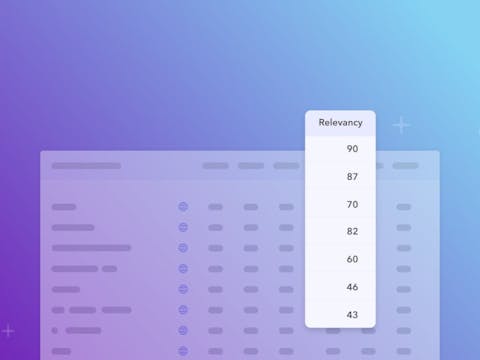
KPIs to Select the Best App Keywords: Volume, Relevancy & More
When optimizing an app for the App Store or Google Play, you want to find the best keywords possible. Competition for visibility within search results is fierce, making it essential to pick the right keywords for your app. You may look for keywords with the highest search volume or the lowest competition. You could also consider the number of potential installs each keyword would bring to your app. However, as the ultimate goal of App Store Optimization is conversion, you should always focus on keywords that are highlyrelevant to your app. Therefore, you need to understand the keywords store visitors typically use when searching for the solution your app provides.
To help you choose the most relevant keywords for your app, we provide you with a series of KPIs to guide your analysis and help you make the right choices. In this article, we explain how to leverage each KPI of our Keyword Table so that you identify the keywords with the best potential for your app.
Search results are more crowded than ever
Over the past few years, the tendency of both the App Store and the Google Play Store was to add new elements to the search results, demanding ASO practitioners to adapt to these changes. We’refar from the period when we had solely apps ranking in the search results for keywords. To cite a few more ranking elements, we have now on iOS 16: Apple Search Ads, in-app events, and featured stories; on Google Play: Ads, “you might also like,” “suggested for you,” related searches, etc.
This is super important to bear in mind, as being the 3rd app ranking for a keyword is not a guarantee to drive the same visibility as before. Let’s look at an example of searching for “Adobe Premium.” Since you can subscribe to Adobe or download a bundle of Adobe apps, we’ll have a myriad of elements ranking in the search results.

You actually have to scroll down twice before seeing the 2nd app ranking (Photoshop Express) on “adobe premium”. So our first advice here is to make sure to use our live search when looking for keyword opportunities to understand the different elements that might be ranking for a given keyword.
Read more on iOS 16 & what’s new for ASO
The fact that search results have become more crowded than ever puts more pressure on ASO practitioners to carry out a thorough keyword analysis to choose the keywords with the best potential for their app. At AppTweak, we provide a series of KPIs to guide your decisions. When looking for appropriate keywords, we typically recommend focusing on 3 important KPIs.
3 indicators to consider when choosing your app’s keywords.
When doing keyword research, it’s important to carefully pick the keywords you’ll ultimately add to your app’s metadata. We generally recommend taking these 3 elements into account:
- Keyword Relevancy: This should be the number one criterion in your keyword selection. You want to make sure that each keyword you pick is truly relevant to your app, and that users who search that keyword have a high chance of being interested in your app.
- Keyword Volume: Of course, it’s important to take the volume of a keyword into account. If your app ranks #1 on very low-volume keywords, you won’t be driving any traffic to your app.
- Keyword Difficulty: If you’ve found a very relevant keyword with a high volume, don’t forget to check its difficulty. It’s no surprise that high-volume keywords are the most competitive ones, with very powerful apps ranking in top results. These keywords are very difficult to rank for in top positions, which is why balancing volume and difficulty is key. You’d rather rank #1 for a relevant keyword with a medium volume, than #50 for a very popular keyword.
How to Conduct Effective App Keyword Research on AppTweak
These three elements generally work against each other, making it tough to find the right equilibrium between all 3. The more specific and relevant a keyword is, the more likely users that perform its search are to convert for your app. However, the less common the keyword is, the lower its volume, which reduces your reach.
Let’s deep dive into each of these metrics (and more) to fully understand how to use them in your analysis.
Expert Tip
Thought “Results” was a good indicator to identify opportunity keywords? Scroll down to find out AppTweak doesn’t believe this to be a relevant metric for your keyword research.
1. Keyword relevancy score
Keyword relevance should be your number 1 priority: You should regularly make sure that the keywords added to your app’s metadata are related to your app’s features and functionalities. Both Apple and Google want to provide a good user experience and that means only showing those apps in the search results that match a user’s search query. Apple and Google are pretty good at this. If a keyword in your metadata is not relevant to your app’s functionality, it is very unlikely that your app will rank in the top 10 for that specific keyword.
At AppTweak, we have developed the Relevancy Score, a unique metric that indicates how relevant a keyword is for a given app in the context of the App Store or Google Play.
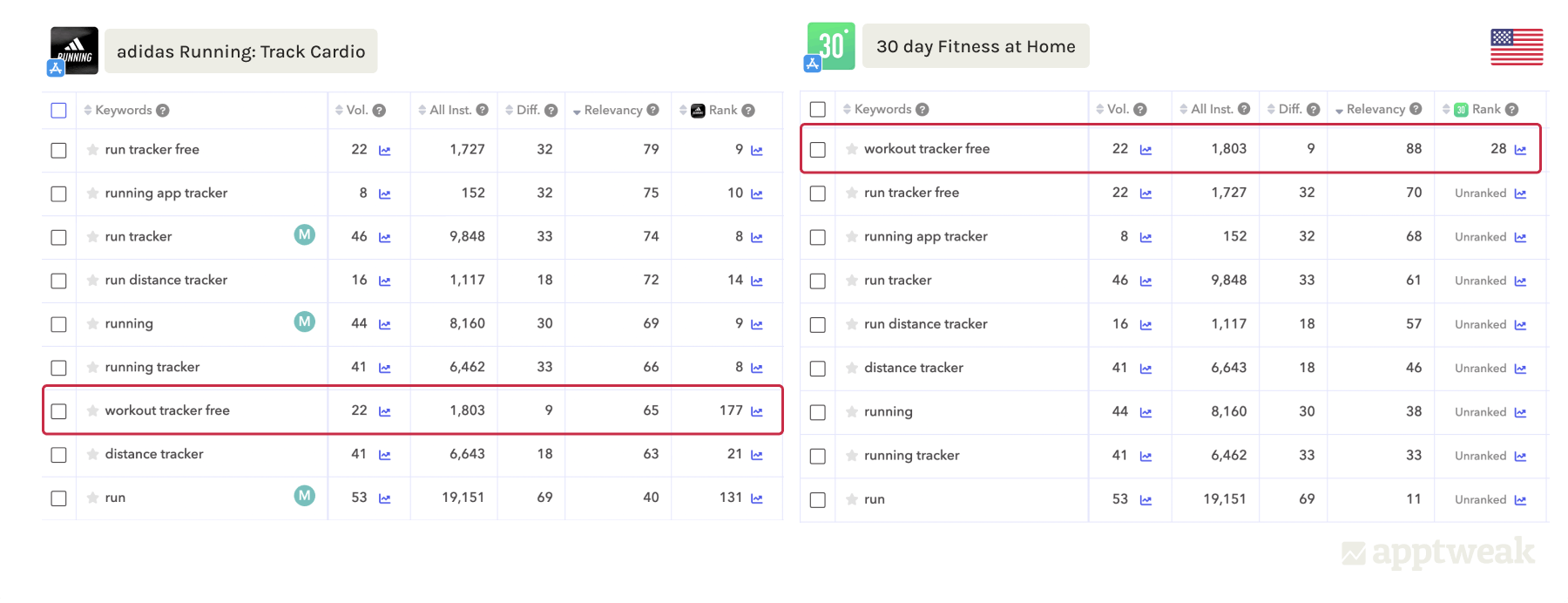
In the example above, all the keywords in the list are highly relevant to the Adidas running app, Runtastic. However, if we take another fitness app with a focus beyond running, the relevancy score for the same keyword is much higher.
How we calculate the Relevancy Score
Our data science team developed Atlas, the first App Store Semantic Engine, a language learning model that combines 8 years of AppTweak data and hundreds of hours of training. It has been trained to better understand the deeper relationships between apps and keywords — and thanks to Atlas, our data scientists were able to create a unique KPI called the “relevancy score.”
The relevancy score is an indicator between 0 and 100 and indicates how relevant a keyword is to an app; a higher score indicates higher relevancy.
“Good” keywords at first glance are not always relevant
If we take the example of Subway Surfers, a game in which a character runs on train tracks to outrun a policeman, you may think that including the keyword “running” would be a good idea. However, if you want to use it as a single term in your metadata, you should understand what type of users this term will target.

In the example above, we looked at two keywords that seem very similar: “running” and “runner.” However, if we check the relevancy score, the keyword “runner” seems more relevant to Subway Surfers than “running.”
To better understand such a difference, you can check AppTweak’s Live Search results and see what type of apps appear in the search results for each of these keywords.

In the screenshot above, we can clearly see that the keyword “running” is predominantly associated with sports apps, whereas for the keyword “runner,” the App Store mostly displays racing games. Therefore, we can conclude that the App Store algorithm perceives these two words very differently and considers “runner” to be a more relevant keyword than “running” for Subway Surfers.
Expert Tip
Use our Brainstorm List – powered by Atlas – to generate the top 100 most relevant keywords for your app in just a click.
2. Search volume
Keyword volume is an obvious KPI to keep in mind. The whole purpose of ASO is to increase your app’s visibility and have your app rank for the keywords that users search for on the app stores. It’s great to have your app rank for different keywords, but you want to make sure these keywords actually drive traffic to your app: If no one searches for a term in the first place, ranking in the 1st position isn’t going to drive a lot of visibility to your app.
Google doesn’t disclose keyword volume numbers. Apple provides a Search Popularity metric in those countries where Apple Search Ads are available. On AppTweak, we fetch the Search Popularity directly from Apple in those countries where Apple made this metric available. For Google and other countries, AppTweak has developed an algorithm that estimates a keyword’s search popularity.
This Search Popularity metric is a metric between 5 and 100, which makes it difficult to truly understand the search volume behind a keyword. To help you better understand how much traffic a keyword can potentially capture, AppTweak has developed a metric, All Installs. This metric estimates the total number of app installs a specific search term generates over the last 30 days.
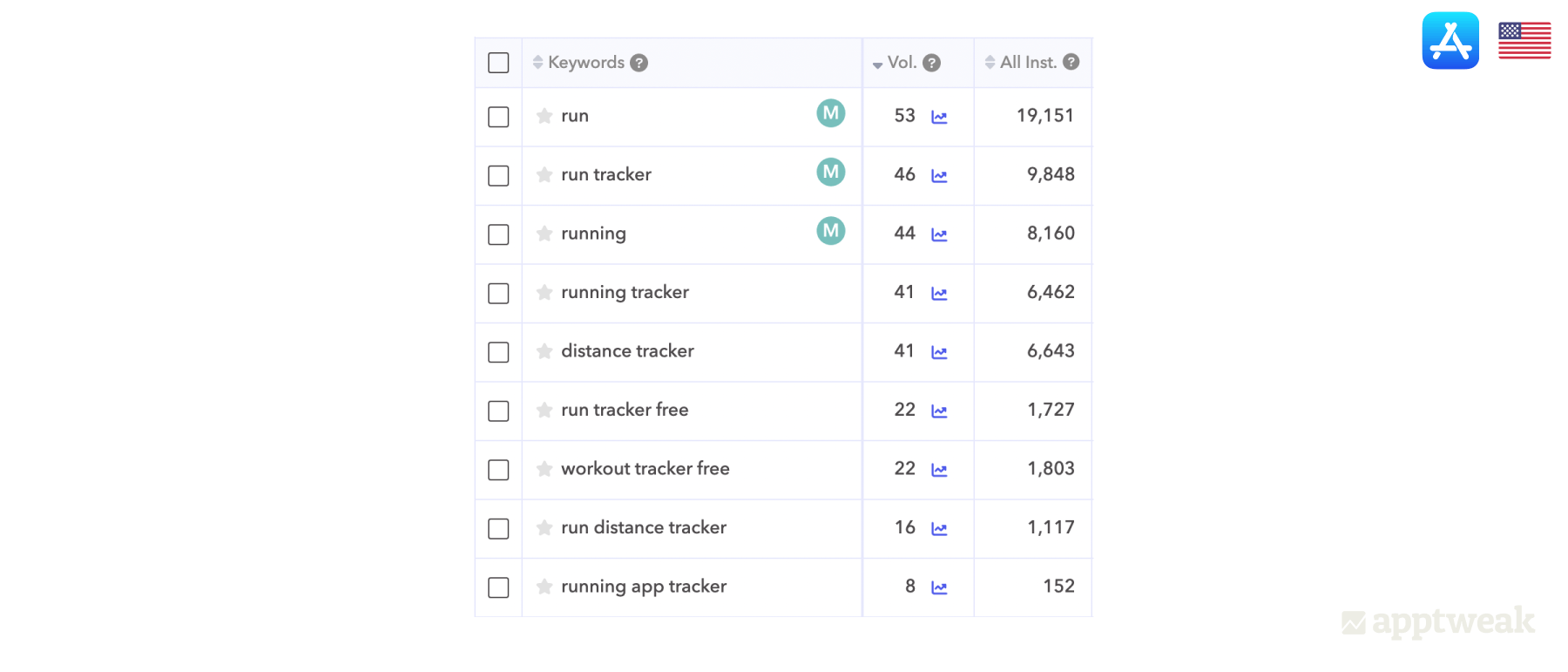
The image above indicates that the keyword volume or Search Popularity grows exponentially. Despite the keyword “run tracker” having a volume only twice as high as the keyword “run tracker free,” it drives 5 times more installs.
Learn more about AppTweak’s volume score
This exponential relationship between volume and traffic makes high-volume keywords very attractive; however, they are also very competitive and just as difficult to rank for. This is why you should also always look at a keyword’s difficulty score when selecting keywords to add to your metadata.
3. Difficulty score
AppTweak created the difficulty score to help you judge how competitive a keyword is. Unless your app is already very popular, you will want to kick-start your ASO strategy by going after keywords your app realistically has a chance to rank for—keywords that aren’t so competitive and that have a low difficulty score.
When selecting keywords to add to your metadata, you want to put aside the keywords that are too competitive, or for which there are already very powerful apps ranking. Sometimes, this means going after keywords with a lower volume. Remember our golden rule: you’d rather rank #1 on a lower volume keyword that’s very relevant to your app than #50 on a very popular word that’s only slightly relevant to your app.
To illustrate, if we look at the same keyword list as previously mentioned, we can see that the search term “distance tracker” has a great balance of good volume and low difficulty.

Generally, keyword difficulty tends to increase with volume. More specific keywords will probably have a lower difficulty (and lower volume). However, there are instances where very powerful apps rank on specific, long-tail keywords, making this actually a difficult keyword to rank for. This is where AppTweak’s difficulty score comes in handy. The difficulty score gives you an idea of the power of the apps that rank on the keyword: the higher the difficulty score, the more powerful apps rank on the keyword.
For instance, who would have thought that “pizza delivery” is actually a more difficult keyword than “food delivery,” although it has a lower volume? Or that, although “alcohol delivery” has a lower difficulty than “pizza delivery,” it actually has a much higher volume!

How we calculate the Difficulty Score
To get an idea of how difficult a keyword is, we look at the top 10 apps that rank on that keyword and their App Powers. If the apps all have a very high App Power, competition will be tough and your app will need many downloads to rank in the top results for that keyword. On the other hand, if the App Powers of the apps ranking in the top 10 results of the keyword are all pretty low, then that keyword probably isn’t too tough to rank for.
Learn more about the App Power
If we come back to the example above, we compared the volume and difficulty of the keywords “pizza delivery” (volume of 24 & difficulty of 89), “food delivery” (volume of 60 & difficulty of 77), and “alcohol delivery” (volume of 36 and difficulty of 54).
We found that “pizza delivery” has the lowest volume of all 3 keywords – yet the highest difficulty, meaning that the apps ranking in the top 10 results have a higher App Power than those that rank for “food delivery” or “alcohol delivery.” In other words, as a new app, competition is easier for the keyword “food delivery” or “alcohol delivery” than on the keyword “pizza delivery.” Plus, they both have better volumes!
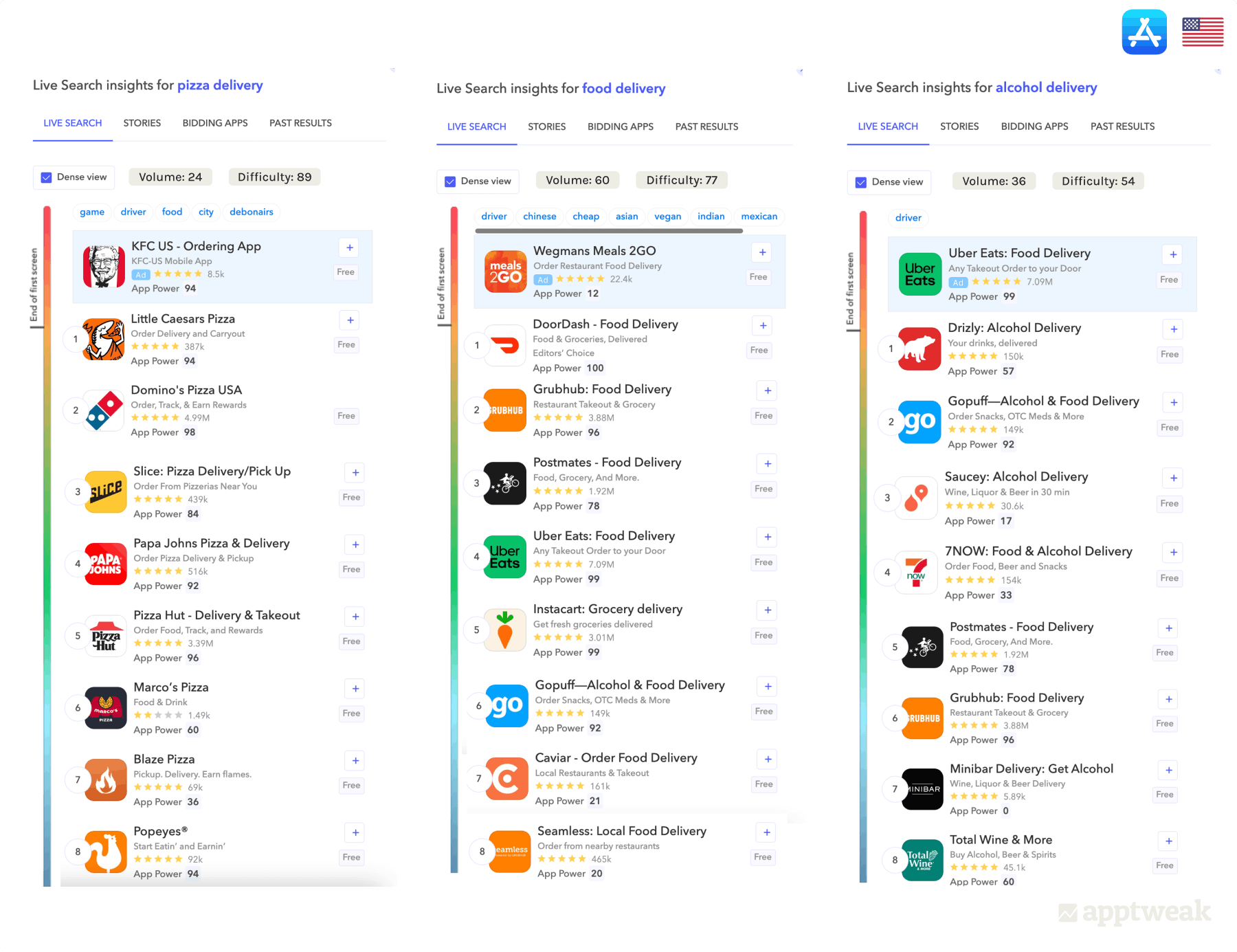
When considering the Difficulty index, always check if the keyword is branded or not as that could mislead you into targeting branded words. For instance, the Difficulty of the keyword “waze” is at 47, indicating that this is a keyword that should not be so hard to rank on. However, since it’s a branded term, it will be difficult for your app to rank high on the keyword.
Expert Tip
Use the “Chance” and “KEI” to quickly identify the keywords that have the most potential for your app. These indicators consider your app’s App Power to highlight the keywords that your app has the best chance to rank for.
Go beyond keyword difficulty: Assess your app’s chance to rank for a keyword
The Difficulty Score estimates how hard it might be to rank for a certain keyword. But because a keyword is difficult to rank on, it doesn’t mean your app can’t try and compete. To help you assess the competitiveness of a keyword, AppTweak has developed the Chance Score. The chance score takes into account your App Power to determine whether or not your app has a chance to rank on a keyword with a certain difficulty score.
Higher up, we suggested that targeting keywords with a high difficulty wasn’t the best strategy if you want your app to rank in high positions. However, that directly depends on the power of your app. If you’re working on an app that drives many downloads on the Store, it might actually have a chance to rank among the top results of difficult keywords. That’s what our Chance indicator is all about. We compare your app’s App Power with those of the apps that rank on a given keyword and tell if your app has a chance to compete against them.
We looked at keywords relevant to two work-related chat applications with very different App Powers, and then ordered the words by chance to see which keywords each app had a better chance to rank for. Slack has a high chance of ranking on all keywords, whatever their volume or difficulty. Wire however should focus on keywords that have a low difficulty.

Combining Chance & Volume to select the keywords with the highest potential
The Chance is a great indicator to show you keywords for which you have the best chance to rank in the top results. However, it doesn’t take into account the keyword volume. As shown in the example above with Wire, the top 4 keywords with the best chance all had a volume of 5, which is the equivalent of nearly no traffic.
If you want to know in just a click which keywords have a good potential for your app (high chance and high volume), AppTweak has developed the Keyword Efficiency Index (KEI). The KEI is calculated using the volume of a keyword and your app’s chance on that keyword. Keywords with a high KEI are keywords with the best combination of high volume and high chance. Those are most likely to be opportunity keywords for your app, making the KEI the ultimate indicator for your ASO research.
If we take the same two apps (Slack and Wire) and the same keyword lists, ordering the keyword by KEI shows slightly different results – instead putting forward keywords that drive higher traffic such as “open office” and “encrypted messaging” for Slack and “group chat for work” or “work group messaging” for Wire.

Keywords with a high KEI are great keywords to go after under the condition that they are relevant to your app. You can never overlook keyword relevancy; the keywords you add to your app’s metadata should always be linked to your app’s universe and what it does.
Taking again the same apps and keywords as above, this time ordering the results by Relevancy, we get a better sense of which keywords are considered most relevant for each app in the eyes of the App Store algorithm.

Why you should use the “Results” indicator with caution
In its early days, Apple used to rank many apps for keywords. Previous versions of iOS return up to more than 1 million apps on certain keywords. Keywords with many results would typically be very generic terms, such as “apps,” “games,” “iphone,” etc.

However, over time, Apple has been more and more restrictive. Today, on iOS 16, the maximum number of apps that can rank on a keyword is set at 250. The fact that Apple is reducing the pool of apps that can rank on a keyword is in line with the general direction we’ve seen the App Store take over the past years: prioritizing quality over quantity.
As a consequence, the competition on keywords has become fiercer than ever, and an app’s relevancy towards that keyword plays a key role in defining whether it should rank on a search term or not.
Some ASO practitioners have been using the results KPI in their keyword research, either as a proxy of keyword volume or competition, or to identify opportunity keywords. The fact that this number is now limited to 250 can be seen as a significant information loss. However, at AppTweak, we did some digging to better understand this metric and came to 3 very important conclusions.
1. “Results” is not a good proxy for volume
It’s not rare to hear ASO practitioners use the number of apps that rank on a search term as a proxy to the traffic that search terms drive on the store. With the arrival of Search Ads, Search Popularity is of course a much more reliable indicator. However, it isn’t always available in all countries (i.e. Brazil, Turkey, etc.).
We investigated the correlation between Results and Search Popularity to see if the N° results returned by older iOS versions was a good alternative to measure keyword volume in these countries – but found that there was none whatsoever. In fact, Results can even be misleading and encourage you to favor keywords with lower traffic.

In the example above, the keywords “games arcade” and “games offline” have a similar number of search results; however, their volume is completely different. “games offline” has a volume nearly 4 times higher than “games arcade”, resulting into a potential of 4000 monthly installs vs. only 200 for “games arcade”.
The 2nd example is even more telling. The keyword “entertainment apps” shows a very high number of results, with nearly 900.000 apps ranking for that keyword. Its volume on the other hand is at 5 which translates into barely any traffic at all.
As a comparison, the keyword “shopping apps” only returns 200.000 search results, but its volume is at 42, which we estimate is equivalent to a potential of 7.100 monthly installs.
2. Results is not a good proxy for competition
Another common belief is that the higher the number of results on a keyword, the more competitive that keyword is. The fact that iOS 16 now limits the number of apps that rank on a keyword to 250 slightly changes this perspective. Apps now compete for the first 250 results in order to be visible on a keyword. As a result, to measure the competitivity of a keyword, it is much more important to look at the type of apps you will be competing against rather than the total number.
To help assess how competitive a keyword is, we recommend using the Difficulty Score. This score takes into account the App Power of the apps that rank within the top results of a keyword. A high difficulty means that the apps in the top search results are powerful apps. Your app will need to drive significant traffic in order to compete with them. A low Difficulty score indicates that the apps that rank in the top results of the keyword aren’t that powerful, suggesting lower competition.

In the example above, “business apps” has > 500,000 search results vs. < 300,000 for “travel apps”. However, the difficulty score for “business apps” is 54 vs. 72 for “travel apps”. If we look at the apps that rank on these keywords, we can see that the apps that appear in the top search results for “travel apps” have a much higher app power than those that rank in top positions for “business apps”. Again, the Difficulty score is a better indicator to assess a keyword’s competitiveness.
3. Results is not a good indicator for opportunity keywords
Finally, some may argue that the Results KPI can also help identify good opportunity keywords – typically keywords that don’t have a lot of apps ranking on them and can therefore be worth targeting. Looking into a wide range of keywords that returned low results, we found that these are generally keywords that are either brand keywords (or highly linked to brands) or keywords with no traffic (volume at 5).

Going after keywords that have very low results only makes sense if they are highly relevant for your app. To avoid wasting effort chasing keywords that Apple won’t consider relevant for your app, we recommend looking at our Relevancy indicator. The Relevancy score indicates on a scale of 1 to 100 how relevant a keyword is for your app. When looking for opportunities, we definitely recommend taking the relevancy into consideration so that you focus on keywords you actually have a chance of ranking for.
TLDR: A quick recap on how to conduct your keyword analysis
If you’re looking to optimize your app’s visibility on the app stores, then you need to know about the three key metrics that can help you do it: search volume, difficulty, and relevancy. Together, these metrics form the foundation of a successful ASO strategy.
- Relevancy: This metric is probably your best ally when doing keyword optimization. We reversed engineering the stores to understand the stores’ semantics and tell you how relevant a keyword is for your app in the eyes of the store. The more a keyword is relevant for your app, the better the chances to rank high on that keyword! Find the top 100 most relevant keywords for your app in just a click using our Brainstorm List.
- Search volume: this one is quite straightforward. It indicates how popular is a keyword in the App Store in a specific market. Obviously, the more popular, the more visibility and potentially the more downloads a keyword can generate.
- Difficulty: Popular keywords might be tempting to target, but make sure to assess how competitive is a keyword first. Remember our golden rule: you’d rather rank n°1 on a lower volume keyword than 50 on a very popular word. Our difficulty metric is here to help you, it assesses how powerful are the apps ranking within the top 10 on a given keyword.
Expert Tip
Use the “Chance” and “KEI” to quickly identify the keywords that have the most potential for your app! These indicators consider your app’s App Power to highlight the keywords that your app has the best chance to rank for.
Then it’s all about the right equilibrium between all 3. The combination of difficulty and relevancy is a real indication of your chances to rank on a keyword. The more specific and relevant a keyword is, the more likely users will convert on your app. However, the less general the keyword is, the lower its volume, which reduces your reach.
Here, we come to the eternal tradeoff between:
- Long-tail keywords: Keywords with a low or medium search volume and difficulty, as they’re quite specific. If your relevancy is high, you might rank top on these keywords and convert well despite the reduced traffic.
- Popular and very generic keywords: These could typically have a high search volume and reduced difficulty but it’s less probable that your app would have the highest relevancy on those.
- Popular and specific keywords: The difficulty should be high for these kinds of keywords, but if your relevancy is the highest among your competitors, these keywords might be gold for your app.


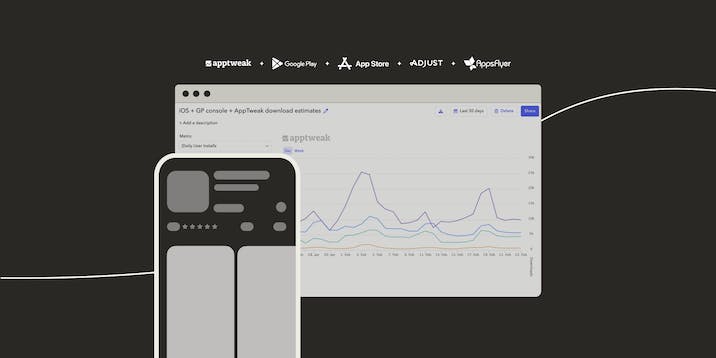
 Antoine Bentin
Antoine Bentin
 Georgia Shepherd
Georgia Shepherd
 Flavien Eyer
Flavien Eyer
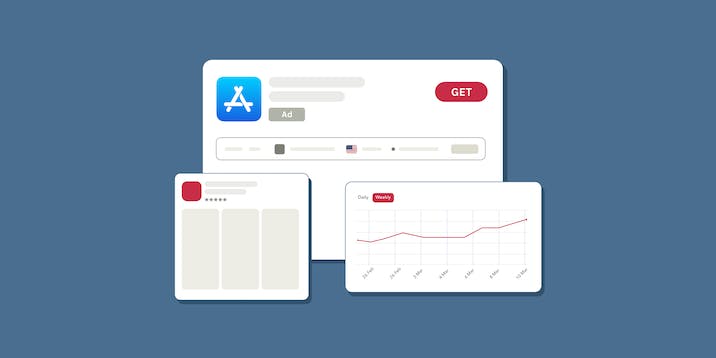
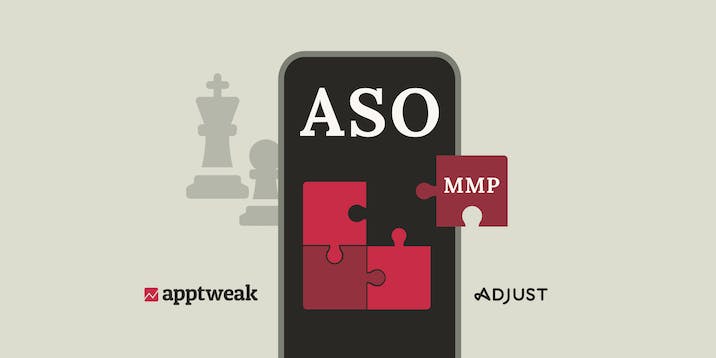
 Alix Carman
Alix Carman